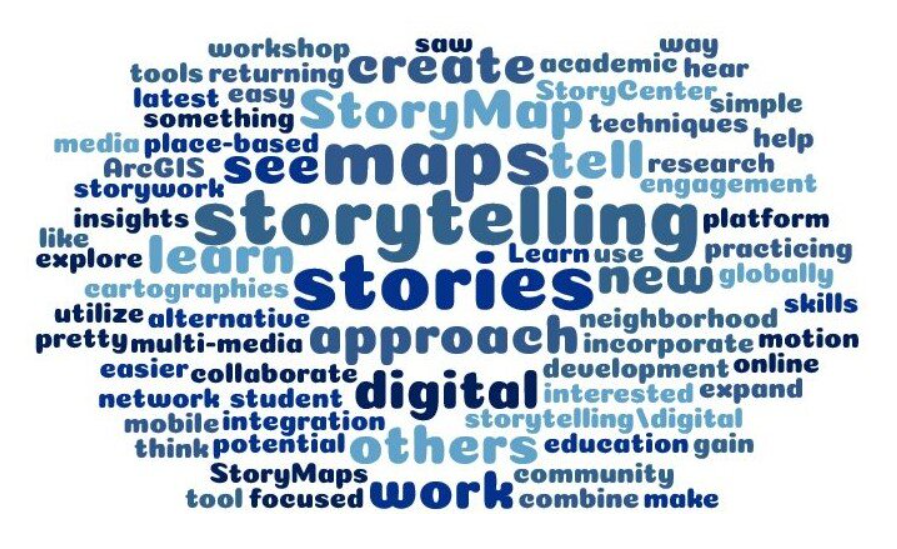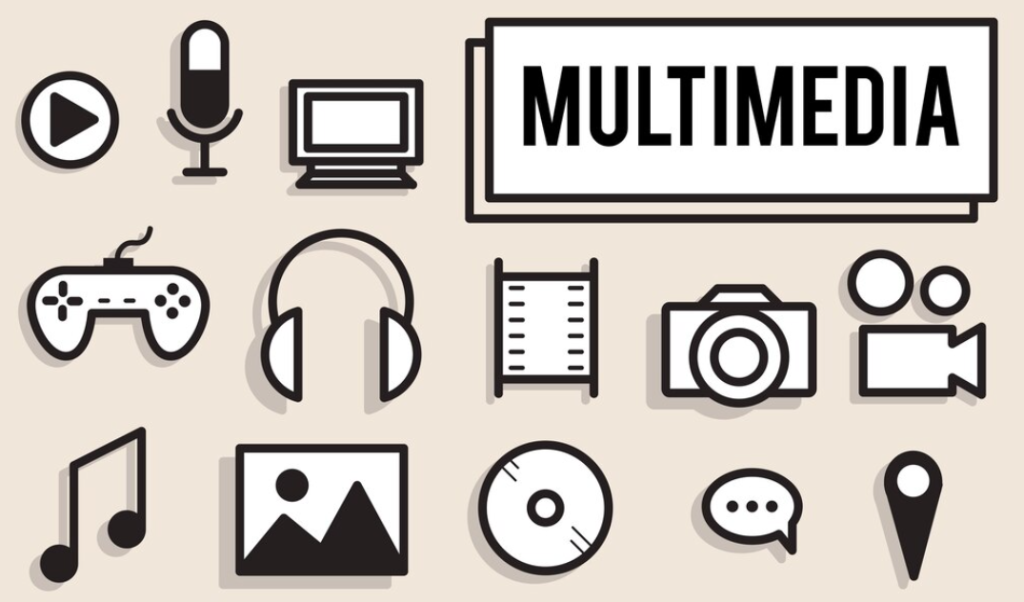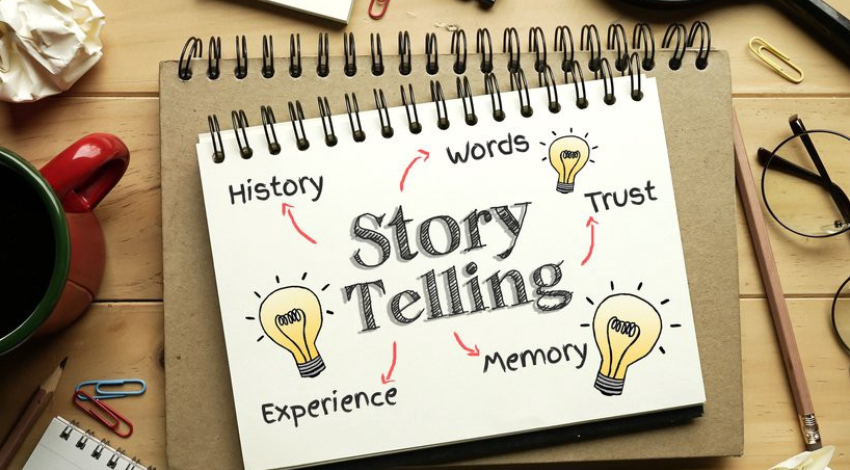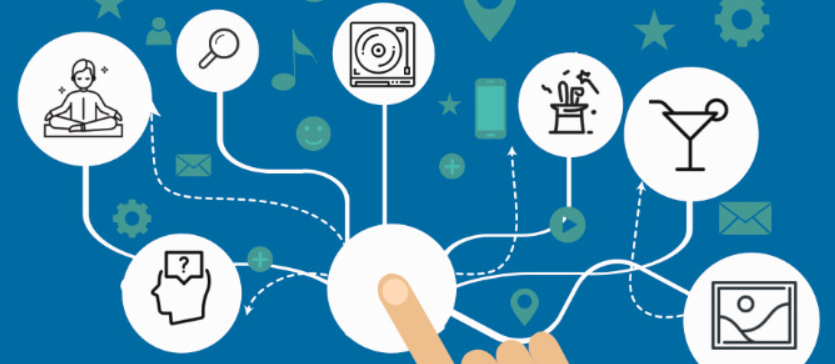The Digital Storytelling of the Hyperlinked Library Center:

Multimedia: The use of various media types, such as images, videos, audio, and text, to convey a story effectively.

Figure 2: Rawpixel.com. (2018, July 17). Free vector: Illustration of technology vector. Freepik. https://www.freepik.com/free-vector/illustration-technology-vector_2605721.htm
Narrative Structure: Crafting a compelling narrative that engages and guides the audience through the story.

Figure 3: James. (2021, April 15). What is storytelling in simple terms? smC2018. https://www.smc2018.org/what-is-storytelling-in-simple-terms/
Interactivity: Allowing viewers to interact with the story by choosing different paths or outcomes.

Figure 4: Edgar, D. (2021, June 28). 7 interactivity pillars for virtual events. VenuIQ. https://venu-iq.com/7-interactivity-pillars-for-virtual-events/
Audience Engagement: Creating content that resonates with the audience on an emotional level and encourages participation and feedback. “StoryMap” is a powerful digital storytelling tool that allows users to create interactive maps with multimedia content. The Hyperlinked Library Center with StoryMaps enables storytellers to combine maps with narrative text, images, and videos to present visually engaging and spatially relevant information. Users can guide their audience through a journey by integrating location-based data with storytelling elements, providing context and depth to their narratives. StoryMaps are valuable for various applications, including educational projects, journalistic storytelling, cultural heritage preservation, and more. (below picture):

Figure 5: Barkett, B. (2019, August 29). 10 ways to engage your audience and boost engagement. aimtell. https://aimtell.com/blog/10-ways-engage-audience-boost-engagement
The Reading storytelling mapping for the Hyperlinked Library Center has some exciting stories to tell by researchers, experts, and patrons:
Lambert assists storytellers in grasping the core elements of dynamic digital storytelling—from conceptualizing the narrative to crafting it and ultimately sharing it. In this fourth edition, readers will encounter fresh insights into the practical applications of digital storytelling alongside updated appendices offering valuable resources for aspiring digital storytellers. As I read the website, I found that the digital storytelling resources include details on past and ongoing projects associated with the Center for Digital Storytelling with the Hyperlinked Library and exploring place-based storytelling—a narrative engagement to comprehend experience and social media platforms. Additionally, a companion website enriches the entire storytelling process. It will be the significant research in educators, librarians, businesses, artists, and writers who are engaging in endeavors that have modernized the perspectives of community activists, educators, health and human services agencies, business professionals, and artists regarding storytelling, media, culture, and the influential role of personal voice in effecting change. For those eager to embark on the journey of multimedia storytelling, “Digital Storytelling” serves as an essential starting point(Lambert, 2018).
Admin. (2024, January 29). StoryCenter geolocation projects. StoryMapping. https://wp.story-mapping.org/
Caquard, S. (2013). “Cartography I: Mapping narrative cartography,” Progress in Human Geography, 37(1), 135-144.
Hill, A. (2021, August 27). Stories in motion: How stories shape our relationship with space. https://www.storycenter.org/storycenter-blog//stories-in-motion-how-stories-shape-our-relationship-with-space
Lambert, J.; Hessler, B. (2018). Digital Storytelling: Capturing Lives, Creating Community. Milton.
Szukalski, B.; Carroll, A. (2020). The Myriad Uses of StoryMaps. https://storymaps.arcgis.com/stories/1b38cf02f39849478d3123dcd9465022
Recommended Reading Materials:
Chancellor, R., & Lee, S. (2016). “Storytelling, oral history, and building the library community,” Storytelling, Self, Society, 12(1), 39-54.
Moenandar, S.-J.; Wood, L. (2017). “Stories of Becoming. The Use of Storytelling in Education, Counselling and Research.” Nijmegen.
Ricoeur, P. (1986) “Life. A Story in Search of a Narrator,” in Doeser, M.C.; Kraay, J.N. (Hrsg.), Facts and Values. Dordrecht, 425-437. = 19.
**Please note this reflection is based on Storytelling people who share their stories with librarians
Frances – This was so interesting! I appreciate your jumping off point to bring all these “storied” ideas to life.